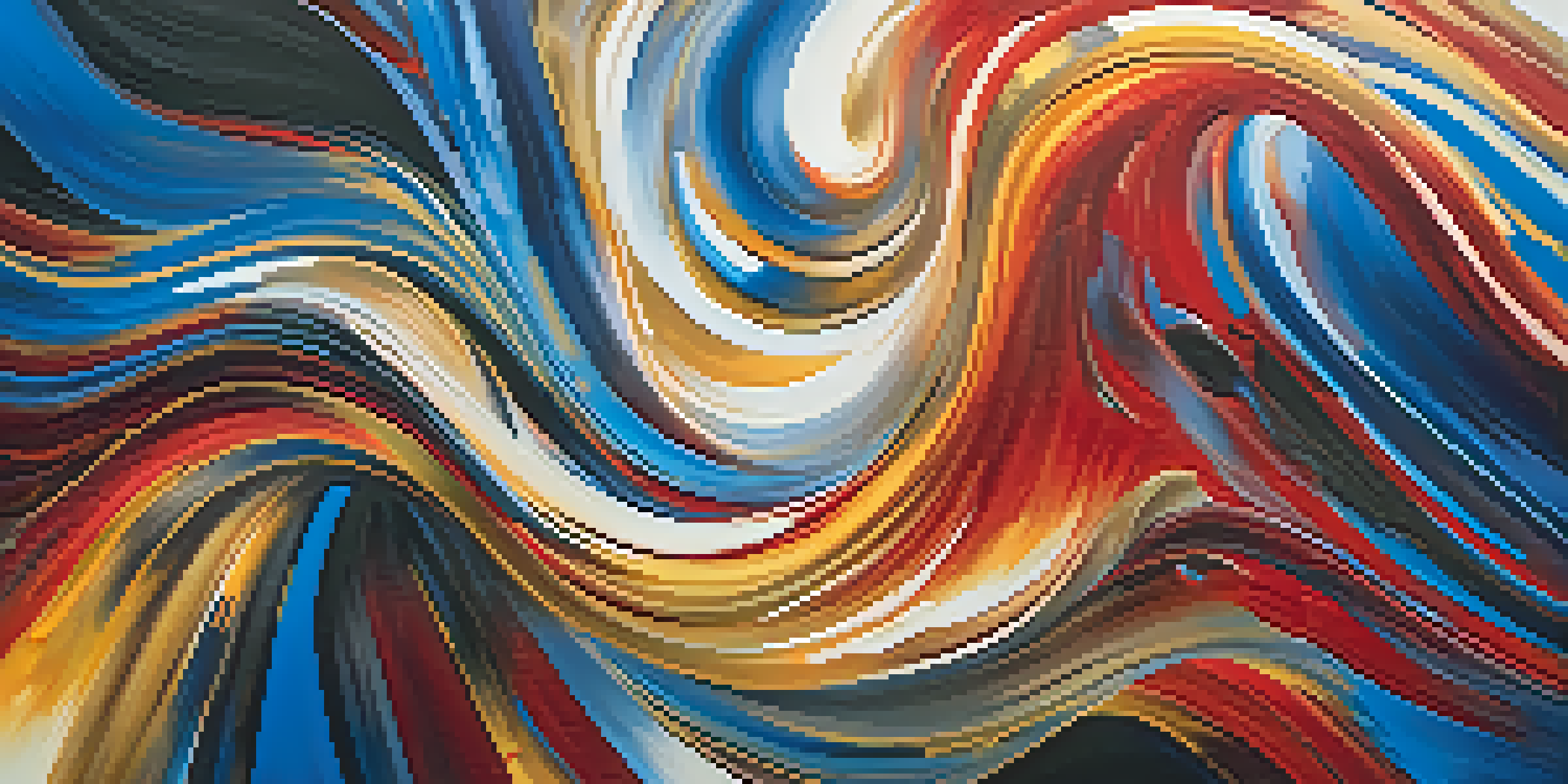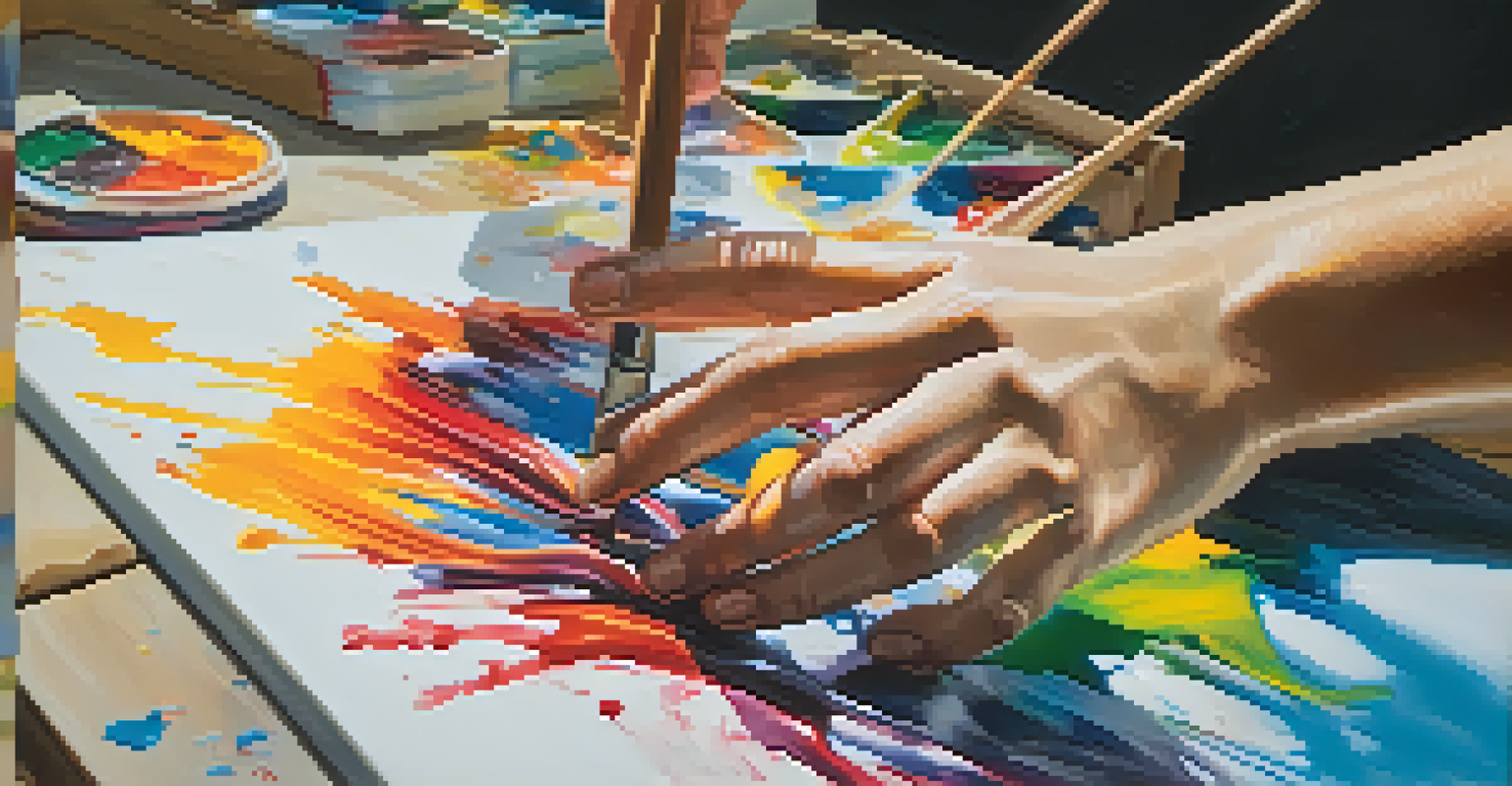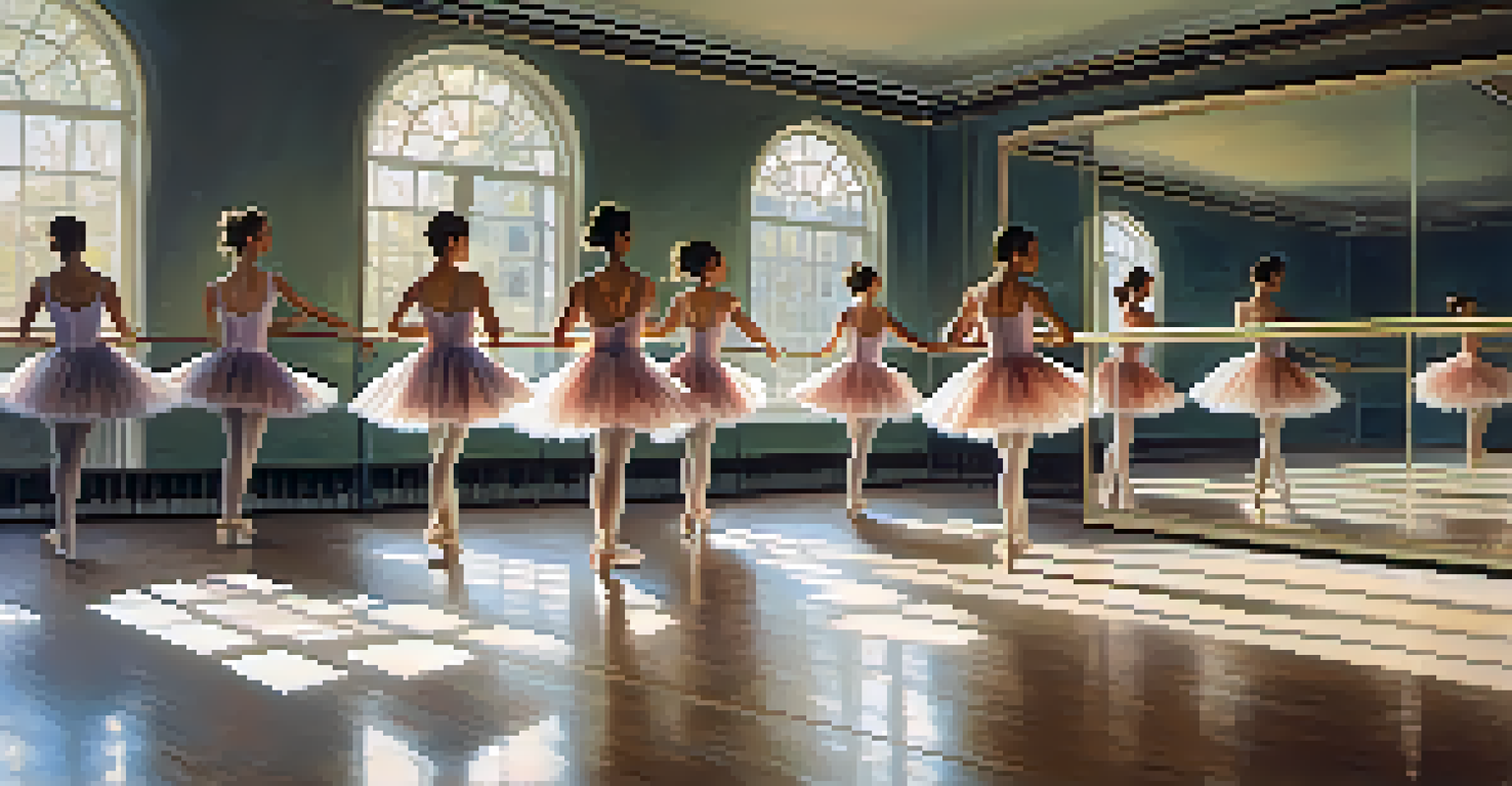Rhythm and Brushstrokes: The Dance of Art and Movement

The Connection Between Rhythm and Art
Rhythm is often thought of in musical terms, but it plays a crucial role in the visual arts as well. Just as music has a beat that guides its flow, art often has an underlying rhythm that can evoke emotions and enhance meaning. Whether it’s the repeating patterns in a painting or the deliberate strokes of a brush, rhythm helps create a sense of movement that draws viewers in.
Art is the most beautiful of all lies.
Imagine standing before a vibrant painting. The way the colors swirl and flow can almost make you feel like you're hearing a melody. This interplay between visual rhythm and the viewer’s perception creates a dynamic experience, allowing art to resonate on a deeper level. It’s this connection that transforms a static image into a living, breathing expression of thought and feeling.
By understanding this relationship, artists can harness rhythm to guide their creative process, making their work more engaging. Just like a dancer follows the beat of music, artists can follow the rhythm of their brushstrokes, creating harmony in their pieces. This synergy between movement and art not only enriches the artwork but also enhances the viewer's experience.
Movement as a Form of Artistic Expression
Movement is not just a physical act; it’s an expression of emotion and thought that can be captured in various art forms. For example, in dance, every motion tells a story, and similarly, the way an artist applies paint can convey feelings without words. The fluidity of movement can be mirrored in brushstrokes, transforming a canvas into a narrative that speaks to the observer.

Consider the way a dancer might leap gracefully across a stage, each motion deliberate yet spontaneous. An artist can mimic this sense of liberation through dynamic brushwork, creating pieces that seem to flutter and soar. This connection between physical movement and artistic creation allows the artist to express their inner world and connect with their audience.
Rhythm Enhances Visual Art
Just as in music, rhythm in visual art evokes emotions and creates a dynamic experience for the viewer.
When artists embrace movement in their work, they invite the viewer to experience art as a living entity. It becomes a dance between the artist and their medium, where every stroke is a step, and every color is a beat. This interplay not only captivates the audience but also inspires them to find movement in their own lives.
The Role of Dance in Visual Arts
Dance and visual arts have long shared a symbiotic relationship. Many artists draw inspiration from the fluidity and grace of dance, translating that essence into their artwork. For instance, movements seen in ballet can inspire a painter’s brushstrokes, resulting in compositions that echo the elegance of the performance.
Every artist dips his brush in his own soul, and paints his own nature into his pictures.
Imagine a painter standing in front of a canvas, mimicking the graceful arcs of a dancer’s arms as they apply paint. Each movement is infused with intention, capturing the energy of the dance within the confines of the canvas. This method not only brings a sense of life to the artwork but also creates a visual rhythm that resonates with viewers.
Through this connection, artists can evoke feelings of motion and grace, much like a dance performance. The result is a piece that invites the audience to not just see, but to feel the rhythm of life, bridging the gap between different forms of artistic expression. It reminds us that creativity often flourishes at the intersection of disciplines.
Exploring Different Art Forms: A Cross-Disciplinary Approach
Art is a vast landscape that encompasses various forms, from painting to sculpture to performance. Each discipline offers unique ways to express rhythm and movement, allowing artists to explore creativity from multiple angles. By blending these forms, artists can enrich their work and create something truly original.
For example, a choreographer might collaborate with a visual artist to develop a performance piece that incorporates live painting. As dancers move across the stage, the artist captures their motions in real-time, resulting in a stunning visual representation of the dance. This fusion of art forms not only enhances the narrative but also invites the audience to experience art in a new way.
Movement Inspires Artistic Expression
The fluidity of movement in dance can be mirrored in painting, allowing artists to convey emotions through their brushstrokes.
Such collaborations highlight the beauty of interdisciplinary creativity, where rhythm and movement become a common thread. Artists can draw inspiration from one another, expanding their horizons and pushing the boundaries of traditional art. It’s in these moments of cross-pollination that the true magic of art comes alive.
The Emotional Impact of Rhythm in Art
Rhythm has a unique ability to evoke emotions, and when woven into art, it can create powerful connections with the audience. Just like a song can lift your spirits or bring you to tears, art infused with rhythm can elicit a spectrum of feelings. The choice of colors, shapes, and brushstrokes can all contribute to this emotional resonance.
For instance, an artist might use rapid, jagged strokes to convey chaos or tension, while soft, flowing lines can evoke tranquility and peace. This intentionality in rhythm allows the artist to guide the viewer’s emotional journey. It’s a dance of feelings that can leave a lasting impression, making the artwork memorable and impactful.
By tapping into the emotional power of rhythm, artists can create pieces that resonate deeply with viewers. This connection fosters a sense of understanding and empathy, bridging the gap between artist and audience. Ultimately, it reminds us that art is not just a visual experience; it’s an emotional one.
Techniques to Enhance Rhythm in Artistic Practice
Artists can employ various techniques to enhance the rhythm in their work, making their pieces more engaging and dynamic. One such technique is the use of repetition, which can create a visual beat that guides the viewer’s eye across the canvas. By repeating shapes, colors, or lines, artists can establish a rhythm that resonates with the observer.
Another approach is to experiment with different brushstroke techniques, such as varying the pressure or speed of application. Quick, energetic strokes can convey excitement, while slow, deliberate movements can evoke calmness. This interplay of techniques allows artists to play with rhythm, creating a dynamic experience that captivates the audience.
Interdisciplinary Art Collaborations
Combining different art forms, like dance and visual arts, enriches creativity and invites audiences to experience art in new ways.
Additionally, incorporating movement into the creation process can also enhance rhythm. Artists may choose to stand, dance, or even move around their canvas as they work, allowing their body to influence the rhythm of their brushstrokes. This physical engagement not only enriches the artwork but also fosters a deeper connection between the artist and their creation.
Celebrating the Intersection of Art and Movement
In celebrating the intersection of art and movement, we acknowledge the profound ways in which these disciplines enrich each other. Art that embodies rhythm can invigorate both the creator and the viewer, transforming the act of creation into a celebration of life itself. It’s a reminder that movement is not just confined to dance; it flows through every brushstroke and color choice.
As we explore this relationship, we can appreciate the beauty of artistic expression in all its forms. From visual art to performance, the dance of rhythm and brushstrokes invites us to experience creativity in a holistic manner. It encourages us to see art as a living entity, full of energy and emotion.

Ultimately, recognizing the synergy between rhythm and art allows us to embrace creativity in our own lives. Whether we paint, dance, or simply appreciate the arts, we can find joy in the movement of expression. This celebration of creativity invites everyone to engage with art, not just as observers but as participants in the dance of life.